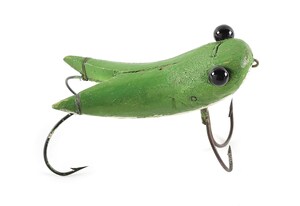16th-Century Suit of Armor with Royal 'DNA' Commands $270,600 at Auction
DENVER, Pa., Jan. 24, 2020 /PRNewswire/ -- Gold and silver may set the standard for commodities on Wall Street, but medieval steel was the metal that ruled the day on January 16 at Morphy's $2.3 million auction of the Susquehanna Collection. To the delight of a packed house that had gathered to bid on a 40-year collection of early Pennsylvania antiques and European heirlooms, a rare and outstanding early 16th-century composite suit of armor with royal provenance claimed top-lot honors at $270,600.
"The suit of armor was a constant source of interest in the run-up to the sale and a very popular attraction at the preview," said Morphy Auctions founder and president Dan Morphy. "We were contacted by collectors from all over the world who wanted to bid on it. They were very familiar with its provenance and importance."
The circa-1510 to 1520 Maximilian suit of armor, which is similar to an example shown in a book published by the Metropolitan Museum of Art titled Of Arms and Men: Arms and Armor at the Metropolitan 1912-2012, was assembled in the 1920s by Dr. Bashford Dean (1867-1928). Dr. Dean, who was the first president of the Arms & Armor Society and first curator of the Arms & Armor Gallery at The Met, used period elements in composing the historically accurate 75-inch-tall suit. Some of the components came from the distinguished collections of Carl, Prince of Prussia and the Princes Radziwill, Nieswiez Castle, Lithuania. Its pre-auction estimate was $75,000-$150,000.
The 219-lot Susquehanna Collection boasted many exceptional, historically significant 18th-century firearms. A pair of Revolutionary War flintlock pistols dated and marked for its original owner, "Robert Roberts 1775," had once been owned by R.H. Coleman, president of Remington Arms Co., and appeared in the July 1972 issue of The American Rifleman. Roberts served in the militia and participated in several engagements in Maryland, as well as at the battles of Brandywine and Germantown in Pennsylvania. The coveted guns, which were accompanied by extensive documentation, sold above estimate for $110,700.
Leading the selection of first-rate Kentucky rifles was a Jacob Kuntz (1780-1876) design with the Pennsylvania State Seal on its patchbox. Described by Dan Morphy as "undoubtedly one of the finest rifles Kuntz ever made," it was crafted in Philadelphia but displayed many of the Lehigh Valley characteristics typical of firearms Kuntz made while learning his trade in Allentown, Pa. It sold above estimate for $61,500. Another standout was a beautifully relief-carved Revolutionary War-era flintlock Kentucky rifle signed "J. Ferree," referring to a Lancaster County, Pa., gunsmith who produced guns and gun barrels under government commission during the Revolutionary War. Among its highly attractive embellishments are fleurs-de-lis, possibly a tribute to Ferree's French Huguenot ancestry. The rifle surpassed its estimate to reach $55,350.
An incredible collection of 18th-century powder horns was offered, none more profusely decorative than the 1763 example engraved with a map of Havana and such landmarks and sites as "Mooro" (Morro) Castle and Shepherds Battrey (Battery). Attributed to a British corporal posted in St. Augustine, Florida, during the French & Indian War and a presumed participant in the Battle of Havana, it sold for $50,430.
There was strong competition for a circa-1740 Philadelphia tall-case 8-day moon-phase clock made by Peter Stretch. The earliest known example of a clock with ogee feet, it more than doubled its high estimate, reaching $166,050.
To discuss consigning to a future Morphy Auctions Americana, Firearms or Fine & Decorative Arts sale, call Dan Morphy at 877-968-8880 or email [email protected]. Online: www.morphyauctions.com.
Media Contact:
Dan Morphy
877-968-8880
[email protected]
SOURCE Morphy Auctions

Related Links
WANT YOUR COMPANY'S NEWS FEATURED ON PRNEWSWIRE.COM?
Newsrooms &
Influencers
Digital Media
Outlets
Journalists
Opted In






Share this article